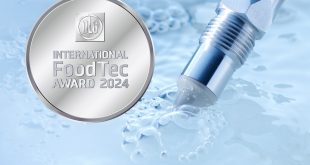 As Instrumentation celebrates its 45th birthday, industrial sensor manufacturer SICK is marking its 40th anniversary in the UK. So, we asked product manager Phil Dyas to look back at how sensing technology has changed; and to consider what that tells us about the future
As Instrumentation celebrates its 45th birthday, industrial sensor manufacturer SICK is marking its 40th anniversary in the UK. So, we asked product manager Phil Dyas to look back at how sensing technology has changed; and to consider what that tells us about the future
SICK entered the UK in 1973. That year, the world was rocked by the Watergate scandal, there was an oil crisis, unrest in the Middle East, terror attacks at home, and the UK economy was going into three-day week meltdown at the hands of a weakening Government. Pink Floyd released Dark Side of the Moon.
Pick up a newspaper today and you might think life hasn’t changed very much. But travel back and what would surprise you as you stepped into the 1970s? Apart, possibly, from the insanely flared trousers, it would be the technology.
Imagine walking into the nearest ‘new-fangled’ supermarket – as long as it wasn’t Sunday, Wednesday half-day closing, or after 6pm, of course. You would see a very limited selection of goods compared to today, push-button tills and hand-stamped price labels.
Also in 1973, Motorola demonstrated the first subscriber mobile phone call from a device bigger and heavier than a brick. On the same day, 3rd April, IBM’s linear Universal Product Code (UPC) was accepted by the National Association of Food Chains in the US as the standard for barcodes.
Developments in retailing, logistics, global manufacturing, digital and wireless communications were all just beginning. But, the speed and revolutionary transformation that has happened since has been unprecedented and awe-inspiring.
Sensor intelligence
When I started working for SICK in the early ‘80s, simple optical sensors were as big as milk bottles. Now, we can get much better performance out of a device the size of your little fingernail!
Back then, intelligent machines were science fiction villains. Now, in-built Sensor Intelligence is the ‘good guy’ that enables high-speed, flexible, traceable and safe automation in production, warehousing and logistics.
A number of key technologies have shaped SICK’s journey along
the way. The company had its beginnings in post-war Germany when pioneering engineer Erwin Sick developed the first single light source light curtain, using a rotating mirror to project the light beams. Then, losing hands and fingers was commonplace, whereas today we expect the highest levels of employee safety and protection!
In 1967 the first SICK barcode reader was launched, the result of close partnership with customers – an approach to technology development still critical to us today – which maximises the application of code reading technology to deliver maximum readability.
The proliferation of data coding for goods identification and the addition of technologies such as part-marking and RFID systems has extended the global reach of FMCG manufacturing across complex supply chains. Goods and components can be tracked, traced and verified from creation to consumption – and even beyond to eventual disposal and recycling.
Flexible, high-speed lines with rapid product changeovers would be virtually impossible and uneconomic without a range of sensing technologies – from simple presence, proximity and distance devices to the in-built intelligence of today’s 2D and 3D machine vision for automated quality inspection and waste reduction.
Miniaturisation of sensors
Thanks to the development of the ASIC chip, optical sensors have intelligent functions in miniaturised designs and can perform reliably even in difficult electro-magnetic or ambient light conditions. PinPoint LED technology delivers small high-energy light spots for improved detection and longer scanning distances that can even cope with the transparent, reflective and curved surfaces of today’s shrink-wrapped multi-packs.
Furthermore, the ability to generate the data, the parallel development of the computing hardware, software and Ethernets provided the infrastructure; while common protocols and open source communications such as IO link have delivered high-speed data highways. Now, it would be technologically possible to adjust a sensor in Australia from a mobile phone in Barnsley.
Sensors are also becoming much easier to programme, install, commission and ‘teach’, meaning complex sensing operations in automated environments can be supervised without expert programming knowledge.
Although I’ve focused on automation, SICK has also been involved in sensing technology to protect the environment. From 1956, boiler efficiency and pollution monitoring were catered for by the first SICK flue gas monitors and carrying through to specific gas detection devices (e.g. SO2, NO and NH3 in 1978). The company’s highly sensitive mercury monitoring sensors are part of a range of solutions designed to meet tougher anti pollution regulations.
Sensing the future
SICK laser sensors are the basis of ultra-modern instrumentation that provides a glimpse of the future. The company’s sensing technology already provides the basis for internet mapping of streetscapes and enables automated guided vehicles to speed around factories without colliding with personnel. It has even helped the development of driverless vehicles which promise mind-blowing future possibilities.
However, the Holy Grail, perhaps, is the use of wireless technology to eliminate power and signal cabling altogether. At the moment, battery technology is unable to deliver the high-power outputs required in miniature format. But, once this is possible, new generations of sensing technology could be the ‘silent heroes’ of another technology revolution.
SICK UK
T: 01727 831121
 Instrumentation Monthly Test | Measurement | Control
Instrumentation Monthly Test | Measurement | Control




